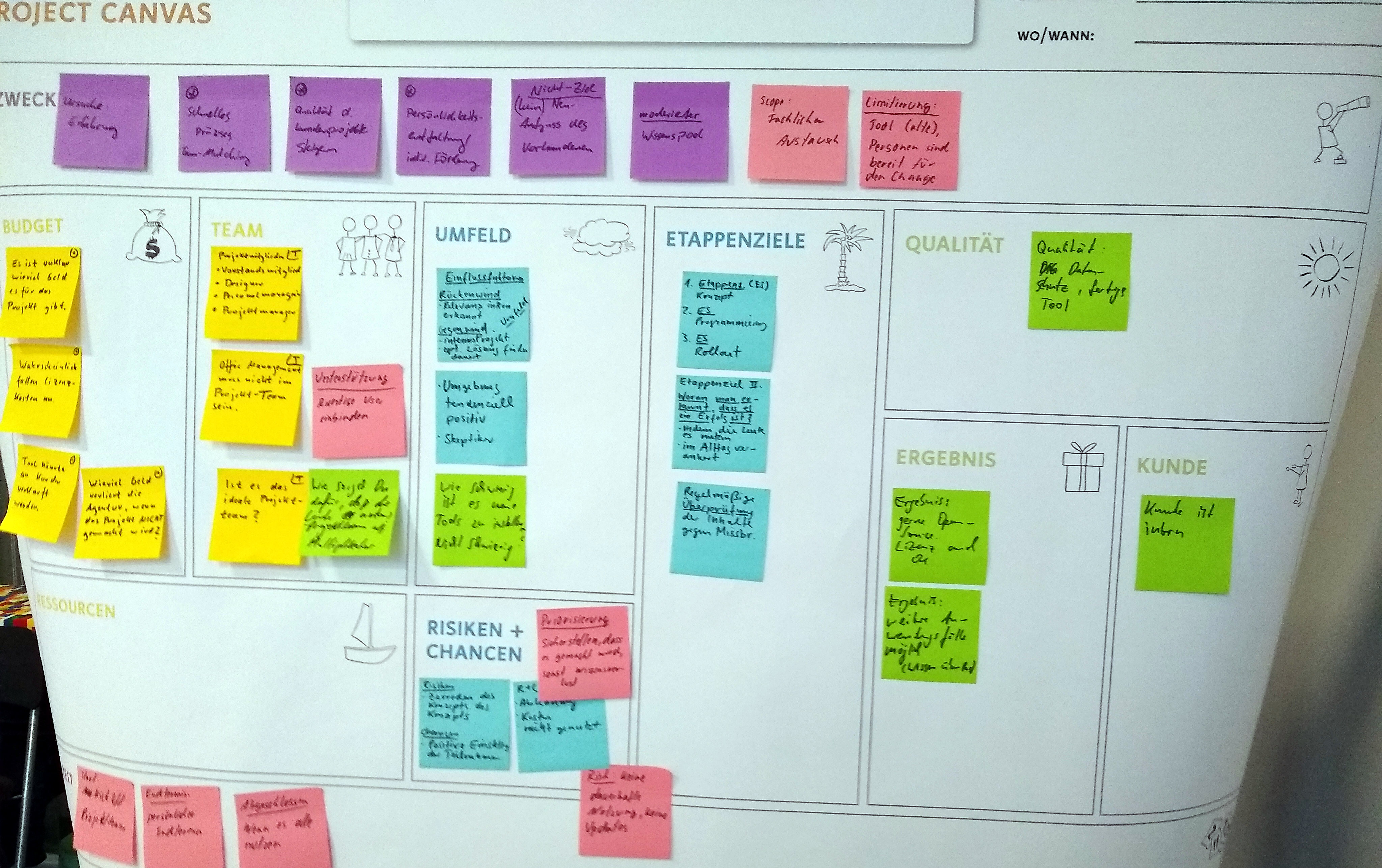


Activities – To the right of “Users” is a list of key activities.For instance, if prototypers are depended on getting content from a client, that should be made explicit. Optional: in the lower half of this box you can show dependencies. We tend to have several lists of participants by type, such as “core team,” ”stakeholders” and “interested parties.” Include individual names as much as possible. This should include all people involved in the project in some way. Participants – On the far left is a list of project participants.Include subheaders in this box to distinguish different types of information. You can also map success metrics to each goal in this box. Goals – To the left of users is a region for project goals.What will they gain from it? This can include things like “faster check-out times” or “more control over their own content” and so forth. User Benefits – List the concrete benefits that users will have when the project is successfully completed.For instance, you can list personas you’ve developed here, as well. You may want to be even more granular in detail. This can be at a high level, such as “readers” and “advertisers” for a media portal. At a minimum, list here the main target groups relevant to the project. Accordingly, we’ve put “Users” in the center of the canvas. Users – I believe users stand at the center of attention in every project.The detailed elements of the Project Canvas° are the 10 boxes in the center: It may be a launch date or it may be a decision by stakeholders to accept the outcome (such as with agile processes). Project End – At the bottom of the Project Canvas is a place to indicate when the project is over.This project intends to address this problem.” Here’s an example: “metrics may show that conversion rates are continually slipping, and analysis of the problem shows that the check-out process is too long. Motivation – In 1-2 sentences, describe the overall intent of the project and what caused the sponsors to decide to initiate the project.Project – Name the project in the grey box in the upper left.Elements of the Project Canvasįirst, there is a group of elements that make up the start and end of the project, located at the top and bottom of the canvas with grey boxes:

For the sake of keeping the canvas simple, I’ve not included further potential elements, like “assumptions” and “critical success factors.” Budgeting and resource concerns are also steps that come later and are not included here. In the Project Canvas° I’ve focused on 10 aspects of projects most relevant to design-related projects, explained below. To expose relationships between the elements of a business model, Osterwalder developed a canvas to visualize 9 most-important dimensions. This approach is directly inspired by Alexander Osterwalder’s Business Model Canvas. Like project definitions, business models also have an invisible logic. Please send feedback directly to improvements.įigure 1: The Project Canvas (by Jim Kalbach) You can use it freely, but note that this is a beta version. I’d like to present a tool to help you get a quick, but broad definition of a project in a single overview. The big picture can fade quickly as work and deadlines pile up. What’s more, a written description of project elements doesn’t expose relationships between them. But long documents – if they get read at all – tend to get lost in the shuffle as the project proceeds. You can’t “see“ project goals or risks, for instance. Part of the problem is that the logic of a project definition is invisible. Likewise, small miscalculations at the beginning of projects can have massive consequences down the road. The links in this post now point to v1.0 of the canvas.ĭefining a project in its earliest stages is likehitting a golf ball: if the face of your club is slightly tilted, you’ll end up slicing the ball as it travels down the green.
#Project canvas finocchio how to
Download the canvas and read more about how to use it.Īs of the Project Canvas is out of beta. This post presents a tool to help you visualize your project: The Project Canvas. Sometime this isn’t an easy task, particularly at the beginning: small deviations at the start can have exponential negative effects later on. Defining a project accurately is critical to its success.


 0 kommentar(er)
0 kommentar(er)
